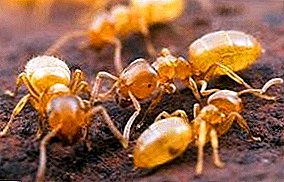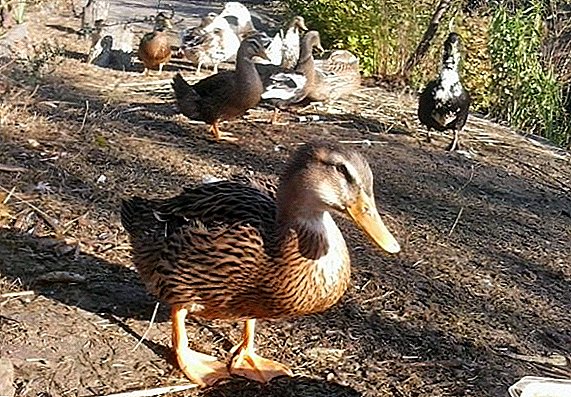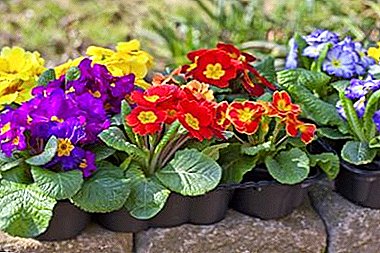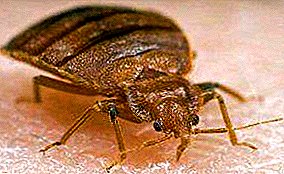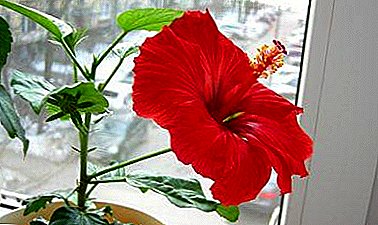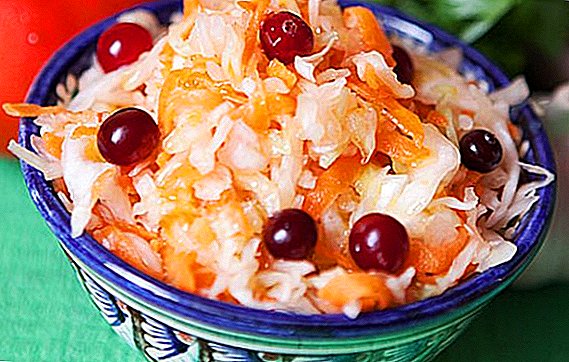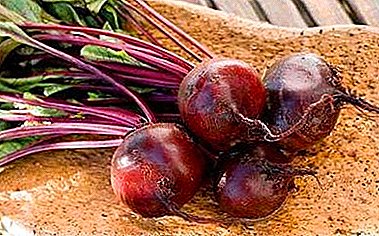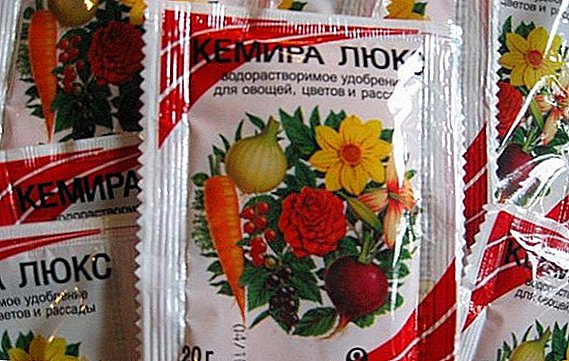 Even an inexperienced mushroom picker never mixes up with mushrooms of other species, as their name speaks for itself: all the mushrooms of this species have a mucous skin. Boletus mushrooms number over 40 different species. In general, tubular fungi of the Boletov family are referred to as buzzers.
Even an inexperienced mushroom picker never mixes up with mushrooms of other species, as their name speaks for itself: all the mushrooms of this species have a mucous skin. Boletus mushrooms number over 40 different species. In general, tubular fungi of the Boletov family are referred to as buzzers.
They mostly grow in deciduous, mixed and pine forests, but, in addition, they can be found anywhere in the planet, characterized by a temperate climate, and even in Africa and Australia.
Let's look at what types of oil are and how they differ.
Goat
The most lesser known boletus mushrooms are kids. Very often, mushroom pickers do not pay attention to them. And in vain, as it is very tasty and absolutely safe mushrooms.  The collection of these mushrooms is carried out from July to September. They have weak mucous sticky caps. Like all boletus, the goat is a mycorrhiza-forming species; it feels great next to coniferous trees on sandy soils. Mushrooms appear in large groups after heavy rains.
The collection of these mushrooms is carried out from July to September. They have weak mucous sticky caps. Like all boletus, the goat is a mycorrhiza-forming species; it feels great next to coniferous trees on sandy soils. Mushrooms appear in large groups after heavy rains.
Externally, the goat looks like a mokhovik mushroom, but has a more convex cap, covered with a brown sticky skin on top. The stem and the tubular layer of the fungus are red in color. The pulp of the fungus is yellow, and in places of rift slightly reddens.
Did you know? Kozlyak simply adore worms. A familiar picture is a goat carpet on a glade, but in reality there is nothing to take. Even if after cutting the mushroom we see a clean foot, this does not mean that its cap will not be wormy. After you check a couple of dozens of mushrooms for worminess, you will be completely disappointed in them.From young intact mushrooms cooked mushroom powder. To do this, dried mushrooms are simply ground in a coffee grinder. It is necessary to add powder when cooking dishes in the minimum doses as it possesses more pronounced taste and aroma, than fresh mushrooms.
Butter Bellini
What do bellini's brute look like? They have a smooth white or brown cap with a diameter of 6 - 14 cm. The young mushroom has a hemispherical cap, which, as it matures, becomes flattened-convex, and its central part becomes more saturated color. On its inner side, short greenish-yellow plates are visible, on which angular-shaped pores are placed.  The fungus has a small, elegant, whitish-yellow stem, which becomes more curved and thin towards the base. The butter dish has whitish flesh, pleasant delicate taste and pronounced mushroom aroma.
The fungus has a small, elegant, whitish-yellow stem, which becomes more curved and thin towards the base. The butter dish has whitish flesh, pleasant delicate taste and pronounced mushroom aroma.
The mushroom lives in pine and coniferous forests and is not too picky about the composition of the soil. Grows singly and in groups. You can see Bellini oil only in the autumn forest.
White butter dish
The white butterdish has a cap up to 12 cm in diameter. In young specimens, the cap is more convex, but as the fungus matures, it flattens and sometimes even becomes concave. 
Did you know? Young mushrooms have a whitish-yellow cap, which darkens with age and becomes grayish or yellowish-white, and in wet weather may even become dull-olive.
The white butterdish has a smooth, slightly mucous cap with a slight sheen. The peel from the cap is easily separated. The fungus has a white or yellowish flesh, which at the breaks becomes wine-red color.
Leg oiler fusiform or cylindrical, white. With age, it can become covered with violet-brown spots and tubercles, which can merge and form rollers.
Yellowish brown butterdish
The yellow-brown oiler has a semi-circular cap with a tucked edge. As the fungus grows, the yellow-brown cap will acquire a cushion-shaped shape and can reach in diameter from 5 to 14 cm. The cap of young specimens has an olive or gray-orange color. As it grows, the cap cracks and becomes covered with small scales, which completely disappear into maturity.  The flesh of a yellowish-brown butterdish can tell about the degree of ripeness of the fungus: at first it is gray-yellow, later gray-orange, then brown-red, and by maturity it becomes light ocher and slightly mucous. The fungus has a dense, hard to peel.
The flesh of a yellowish-brown butterdish can tell about the degree of ripeness of the fungus: at first it is gray-yellow, later gray-orange, then brown-red, and by maturity it becomes light ocher and slightly mucous. The fungus has a dense, hard to peel.
The cylindrical or club-shaped stem of the yellow-brown mushroom reaches a length of 3 to 9 cm. The oil can has a subtle mushroom aroma, but it also smells strongly of pine needles.
Did you know? Despite the attractive appearance and absolute safety, the yellow-brown oil can is rarely used in mushroom pickers as it is not very tasty, and therefore it is eaten only in pickled form.
Yellow-brown butterdish grows well on sandy soils, it can be found in the forest from June to November. The fungus grows both singly and in small groups.
Yellowish oil dish
The yellowish oil can, the description of which differs little from the description of all the other Boletovs, loves warmth and is found in forests with sandy soil. The fungus grows both singly and in large groups. It is possible to collect yellowish boars after heavy rains, from May to November. The mushroom has a cap with a diameter of 3 to 6 cm. 
Important! Despite its high taste, yellowish butter dish is considered conditionally edible, as its skin contains substances that cause severe diarrhea.
Young mushrooms have practically spherical caps, which, when mature, the oiler opens and becomes cushion-shaped. Depending on the age, the color of the cap of the fungus can be yellow-brown, gray-yellow, ocher-yellow, and even chocolate. The surface of the cap is very mucous, the skin is easily removed from it.
The yellowish oil can has a leg that reaches 3 cm in diameter and has an oily ring, above which it has a white color and below it has a yellow color. In young mushrooms, the ring is white, but with age it acquires a purple hue. The fungus tubules have a pleasant ocher-yellow color, but with age they become almost brown.
The white flesh of the fungus can become yellowish. In the area of the cap and top of the leg, it is orange or marble, and at the base it is slightly brown. Yellowish butters are very tasty, and therefore not only people, but also the larvae of all insects feed on them with pleasure, therefore finding whole mushrooms is a very difficult task.
Granular butterdish
Grain butter dish does not stand loneliness, and therefore it can only be met in the company of friends. Mushroom lives mainly in pine forests, in low grass.  The mushroom has a less sticky cap than other types of oil, so it sometimes seems completely dry. The round-convex cap of the mushroom in diameter reaches about 10 cm.
The mushroom has a less sticky cap than other types of oil, so it sometimes seems completely dry. The round-convex cap of the mushroom in diameter reaches about 10 cm.
Young specimens have reddish or brown-brown caps, which, as they mature, the oiler becomes yellow or yellow-ocher. The culture has thin short tubes that form a tubular layer of light or light yellow color.
The mushroom has a thick yellow-brown, pleasant-tasting pulp that does not change color on a break. The yellow stem of the fungus reaches a length of up to 8 cm, in the upper part it has a white color and is covered with seeds and warts.
Externally, the grease fitting is grainy, similar to a butter dish, a real one; its main difference is the absence of a filmy ring on the stem. Granular butterdish is an edible mushroom that has high taste characteristics and is eaten fresh, pickled or salted.
Cedar butter dish
The cedar butterdish has a hat in diameter from 3 to 15 cm. Young mushrooms can boast of its spherical shape, but with age it straightens and becomes cushion-shaped.  The color of the cap is brown, and in rainy or wet weather it becomes mucous, while it dries quickly and becomes glossy.
The color of the cap is brown, and in rainy or wet weather it becomes mucous, while it dries quickly and becomes glossy.
The flesh of the cedar butterdish is white or yellow, slightly sourish in taste and gives off a pleasant almond-fruity aroma. Its tubules and pores have an olive-ocher, dirty yellow or orange-brown color.
The cedar oilcan has a thick base and tapers towards the top, its length reaches from 4 to 12 cm. The mushroom can be found in cedar, oak-cedar or coniferous forests. The time of collection of the fungus coincides with the beginning of flowering pine.
Did you know? More recently, scientists have discovered in the oil special resinous substances that eliminate headaches, as well as help soothe an attack of gout.
Larch butterdish
A larch oil can dwells near the larches. Larch maslata can be found in forests from July to November. This type of oil boasts excellent performance and grows in large groups.  The larch butterdish has a smooth slug lemon-yellow or orange-yellow-yellow cap, which is very hard to peel. The color of its spongy part varies from yellow to brownish-yellow; when pressed, pinkish-brown spots form on it.
The larch butterdish has a smooth slug lemon-yellow or orange-yellow-yellow cap, which is very hard to peel. The color of its spongy part varies from yellow to brownish-yellow; when pressed, pinkish-brown spots form on it.
The cylindrical leg of the fungus in the upper part is decorated with a ring, above which it has lemon-yellow, and below it has a yellow-brown color. The pulp of the oiler is yellow, but at the break it is colored brown. The mushroom has a mild flavor and a pleasant taste.
Butter dish real
Oiler present grows on sandy soils. The gathering season begins in May and ends in September. Fruit bodies grow alone or in groups. 
Important! Doctors advise to refrain from eating large amounts of oil to those who have any diseases of the gastrointestinal tract. The fact is that mushrooms in large quantities contain cellulose, soaked in quinine, which not only complicates the absorption of food, but also can cause inflammation of the digestive system.
A real butterdish is decorated with a 10-centimeter hat, beginning with a convex and then almost flat with a small knob in the middle of the shape, having a chocolate-brown and sometimes with a slight violet shade of color. The fungus is covered with a radial-fibrous mucosa, easily detachable peel. The tubules of young mushrooms are pale yellow, but over time they darken and become dark yellow.
The pores of the fungus are pale yellow, but as the fungus matures, they become bright yellow, and later brownish yellow. The tubular layer is attached to a cylindrical stem, reaching a length of 10 to 25 cm and having a lemon-yellow hue in the upper part, and a brownish shade in the lower part. As the fungus grows, a white filmy blanket, which first connects the edge of the cap with the stem, remains on it in the form of a violet or black-brown ring.
Pulp butterdish present is very juicy and soft and has high taste characteristics, similar to the pulp of white mushrooms. The real and the false butter dish are not similar to each other, and therefore it is almost impossible to confuse them.
Remarkable butterdish
The remarkable butterdish has a wide sticky fleshy scaly hat, reaching in diameter from 5 to 15 cm. The peel from the cap is very easily removed. The mushroom forms a short stem, reaching a maximum of 11 cm in length and decorated with a ring that is sticky on the inside.  Delicious edible mushroom that is suitable for pickling, drying and lodging.
Delicious edible mushroom that is suitable for pickling, drying and lodging.
Painted butter dish
The painted oil can has a cap, which can be 3 to 15 cm in diameter. On the edge of the cap, you can consider flakes, which are remnants of a private blanket. The cap of the fungus has a wide conical or pillow shape. Its color depends on weather conditions: at high humidity it is darker, and brightens in dry weather. Also, the cap of the fungus changes color when infected with insects.  Young painted bolettes flaunt red, brick-red, wine-red or maroon-red hats covered with small gray-brown or brown scales. The yellow leg of the fungus can reach a length of up to 12 cm. The annular zone is cut by tubes that go down the leg and form a mesh.
Young painted bolettes flaunt red, brick-red, wine-red or maroon-red hats covered with small gray-brown or brown scales. The yellow leg of the fungus can reach a length of up to 12 cm. The annular zone is cut by tubes that go down the leg and form a mesh.
The yellow pulp of the fungus has a high density and reddens on breaking, but it is very pleasant to the taste. The painted oil can be eaten even without prior heat treatment.
Ruby oiler
The ruby oiler is a very rare edible mushroom that is found only in the oak forest. Young mushrooms have a hemispherical brick-red or yellow-brown cap, which eventually opens up and turns into a practically flat. It has a tubular hymenophore. The tubes and pores of the fungus are pink-red and do not change color when damaged.  The club-shaped or cylindrical pink leg narrows to the bottom and is covered with red bloom.
The club-shaped or cylindrical pink leg narrows to the bottom and is covered with red bloom.
The fungus has a yellowish, flesh that does not change color in the air and does not have a pronounced mushroom taste and aroma.
Butter red-red
The red-red butterdish has a yellowish-orange semicircular or pillow hat, covered with orange-red scales.  Falling adherent yellowish or yellow-orange fungal tubes are covered with wide angular pores. The cap is kept tapering downwards and upwards, with a spindle-shaped yellow-orange leg. The bright yellow dense pulp of the fungus on the fracture turns red and gives off a barely perceptible mushroom flavor.
Falling adherent yellowish or yellow-orange fungal tubes are covered with wide angular pores. The cap is kept tapering downwards and upwards, with a spindle-shaped yellow-orange leg. The bright yellow dense pulp of the fungus on the fracture turns red and gives off a barely perceptible mushroom flavor.
Red-red handsome can be found in the Alps, Western Siberia, Altai, Western Siberia and in Europe.
Red butterdish
The red butterdish is a small mushroom that grows in mixed forests and is able to please our taste buds with a delicate soft taste and a pleasant mushroom aroma. The mushroom settles under the larches and forms a mycelium with them. You can go hunting for red boars from July to November.  Experienced mushroom growers claim that it is impossible not to notice the reddish-red sticky cap of red oil in the grass. The mushroom does not tolerate loneliness, and therefore, if you have found one butter dish, then you will definitely collect them for a little bundle.
Experienced mushroom growers claim that it is impossible not to notice the reddish-red sticky cap of red oil in the grass. The mushroom does not tolerate loneliness, and therefore, if you have found one butter dish, then you will definitely collect them for a little bundle.
When cooking, the skin is removed from the fungus, as it becomes an unpleasant black color during the heat treatment, and the peeled boils have a bright cream color.
Gray butter dish
Gray oil can be found in young deciduous and pine forests. The mushroom grows in large groups.  The cushion cap with a tubercle in the center is gray-white with a slight green or purple tint, the oiler cap can reach a diameter of up to 10 cm, and is covered with a wet mucous layer. Grayish-brown or grayish-white tubular layer of the fungus consists of wide tubes that descend to the leg.
The cushion cap with a tubercle in the center is gray-white with a slight green or purple tint, the oiler cap can reach a diameter of up to 10 cm, and is covered with a wet mucous layer. Grayish-brown or grayish-white tubular layer of the fungus consists of wide tubes that descend to the leg.
The leg of a young mushroom is surrounded by a wide felt ring, which disappears with time. The cap is covered with a hard peel that can be easily removed by lowering the fungus for a few minutes in boiling water.
Siberian butter dish
The mucous cap of the mushroom Siberian oiler can reach in diameter from 4 to 10 cm. The caps of young mushrooms have a broad conical, and mature cushion-shaped shape and olive-yellow or yellow-olive color. The cap of the mushroom is formed of brown radial fibers. The color of the legs and the pulp of the fungus is yellow or grayish yellow.  Externally, the Siberian butter dish is very similar to the cedar butter dish, but it also has a lighter color than its relative.
Externally, the Siberian butter dish is very similar to the cedar butter dish, but it also has a lighter color than its relative.
Important! Biophysicists have found that boletus most of all other mushrooms are prone to accumulation of radionuclides, and therefore it is necessary to be very attentive to the place of their collection.
About oil can talk for a long time. But the main thing - it is very tasty mushrooms, which are good both in fresh and pickled form. Oil is healthy and nutritious. However, when picking mushrooms, be extremely careful and do not forget that you should not send suspicious copies to the donkey, as their consumption can cause severe poisoning.


